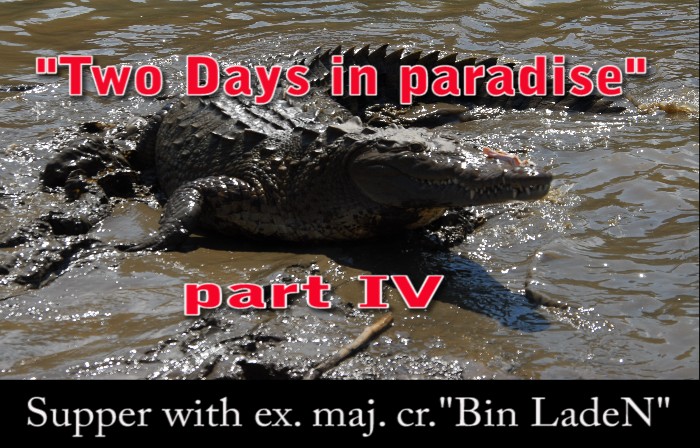ELEPHANT SLAUGHTER (II)
Illar Muul, PhD
President & Founder of Integrated Conservation Research, Inc.
In the last article, I summarized the extraordinary study on the demise of elephants caused by illegal global trade in ivory, published in the National Geographic Magazine (NGM) in October 2012. Everyone hopes that the outrage resulting from it will bring about changes in global strategies in conservation.
A lot of money has flowed into conservation efforts during the last two decades, but for the most part, the tide toward annihilation of many endangered species has not been reversed, or even slowed down. Many species are more endangered than elephants. For example, the largest and most charismatic of the remaining wild cattle species is down to about 2000 individuals (elephants about 500,000, by 2007 estimate, pg44). I plan to discuss the problems regarding gaur and other species in peril in future articles.
Most conservation efforts focus on more research. This is necessary, of course, but what are the next steps? Creation of parks and reserves has certainly helped, but that does not seem to be enough. For example, in the largest park in Malaysia (Taman Negara, 434,300 ha), poaching for ivory, rhino horn, gaur meat, and other valuable products continues, despite heroic efforts by park rangers.
The problems related to conservation of elephants are extremely complex. Solving complex problems is usually left to engineers, with help from technological specialists. What we need is something like “ecological and economic engineering.” The first phase is called “problem definition.” This has been very well done in the article in NGM for elephants, but needs to be enlarged.
Next is to set “specific goals” and identify “program elements” to reach the goals and their order. Funding requirements, needed human resources, equipment, operational costs, and sources of funding should be part of the plan. In the conservation arena, full funding for projects is very difficult to obtain. But, proceeding only half way through a project with only half the funding required seems to be a waste of money. On the other hand, to get fully funded a complete plan, with “end-points” is needed.
Another aspect of engineering is dividing the problem into manageable parts. For example, problems related to Asian and African elephants share some commonality, but also differ in many aspects. So, let us begin with Asian elephants because I have some personal experience in Malaysia, Thailand, Sri Lanka, and China (southern Yunnan Province).
Problem Definition
A. People against elephants
1. Increasing human incursion into elephant habitats: farming, roads, logging, and mining.
2. Poaching for ivory.
3. Attempting to drive elephants away from crops. One autopsied individual in Sri Lanka had over 100kg of shot gun pellets embedded in its hide (1969).
4. Accidental deaths and injuries from snares (steel cable) set for wild pigs or deer. Near a forest village in Malaysia a female elephant tore up half of a soccer field size area of all vegetation around her calf that had been ensnared in a “jerat.”
5. Forest fires following logging. One fire in the 1980’s in eastern Borneo burned for nearly two years.
6. In southern China elephant trunk is considered a delicacy and was on the menu in a restaurant in Hainan (the island has no indigenous elephants).
7. In Southern Yunnan Province government officials shot an elephant in a protected area in the early 1990’s.
8. In Sri Lanka, parts of India, and Thailand many people revere the elephant since it has a large role in religion and folk lore.
In the past, large numbers were domesticated for use in logging, transport, hunting, and warfare. Now they play an important role in tourism. And, who can forget circus elephants?
B. Elephants against people
1. A documentary presented in 2013 reported that 70% of the elephant populations in Sri Lanka lives outside parks and reserves that were established for their protection. Sri Lanka has a human population of about 20 million and is 66,000 km2, or about the same size as Ireland (4 million people) or Latvia (2.3 million people). When I was there in 2005, a rogue elephant was terrorizing a small community in a tea plantation where I was staying, not far from a National Park. The documentary claimed that last year 200 elephants were killed in conflicts in which 6 people also died.
2. In some cases, elephants seem to have a sense of humor. In Malaysia, in the 1970’s, Taman Negara (National Park) could be reached only by river. The headquarters was on the boundary marked by the Pahang River. Some of the rangers maintained gardens outside the park, i.e., across the river. Some had built small shelters that stood on stilts. But, this garden area was in the middle of a path used by elephants to cross the river, to exit from and return to the park. Whenever a shelter was completed, elephants would pull out a single stilt, causing the shelter to sag. No other damage was done. However, if the shelter was re-built, the same stake was pulled out again, and again. The elephants did a lot of damage to nearby plantations (young rubber trees, oil palm, pineapples, etc.) outside the park.
3. Elephant populations in Thailand are too large to be supported by existing national parks. Moreover, work done by captive elephants in logging and transport is mostly done by machines. Thus, most captive elephants are “unemployed,” as are “mahouts” who train and care for them.
4. Tourism sometimes invades elephant “territory” and some adults can become aggressive defending their “turf.”
5. Male elephants become particularly aggressive during their “musth,” when their hormones become active, sometimes overactive. (This happens also in some humans).
If one tallies a score, obviously the elephants are losing in the conflict with humans over land and resources. The unavoidable conclusion would be that we need more land devoted to support and protect the elephants. But, in Sri Lanka with an increasing human population, no “extra” land is available.
However, in Thailand people and elephants have lived together in peace for centuries. Yet, sale of ivory (from domestic sources) is legal. Increasingly, elephants play an important role in tourism. Tourism has earned Thailand annually over $10 billion (The Economist, 2007). They had over 11 million arrivals, and more in recent years, ranking 17th among countries of the world.
Sri Lank has a human population over 20 million, with only 66,000 km2 of land (about 300/km2); Thailand has over 63 million people and 513,000 km2 of land (about 123/km2). Being on an island people or elephants can‘t easily migrate elsewhere. Elephants in Thailand can easily move to less populous Laos, Cambodia, Malaysia, or Burma. Conclusion: the conflict is less intense in Thailand.
Since the conflict in Sri Lanka between the denser human population and elephants is more severe, resolution of the problems is much more difficult. Owing to recent ethnic wars, tourism has greatly reduced, so other innovative economic support for elephants has been developed, such as making paper products from abundant elephant dung. In the documentary I noticed that most of the adult elephants had no tusks. No mention was made as to whether the ivory had been sold, or tusks were removed to reduce the incentive for poaching.
Twenty years ago, we published a new concept in conservation: achieving “critical mass”, which was published by the United Nations (UNESCO MAB Digest 15). I have not seen any reference to it in conservation publications that have appeared since then. Simply stated, “critical mass” in conservation efforts is reached when ecologically sustainable economic activities surpass in profits those that are ecologically unsustainable . If “critical mass” is not achieved, in most cases the unsustainable forms of development will prevail. Another way to look at this is that you need to do all that is necessary to succeed. The slaughter of elephants is neither ecologically nor economically sustainable.
But, even though it is true, how can we prove it to end-users of ivory and to those who supply them illegally? That will be the subject of the next article.
Editor’s note:
A fund has been set up by:

958 Broadview Avenue Toronto Ontario M4K 2R6
phone (416) 465-4659 or toll-free 1-866-844-3828
fax (416) 465-8442
Estonian World Review INC 129690
to support ICR. Please help support this worthy organization and forward this article to those who would be interested in “common sense” solutions to complex conservation challenges.
The future of elephants and many other endangered species is at stake. You may agree that “common sense” is often not so common. Dr. Muul has summarized the problems that are so well analyzed by the National Geographic Magazine. We look forward to Dr. Muul’s interpretation of this horrible situation, and possible resolutions.
























